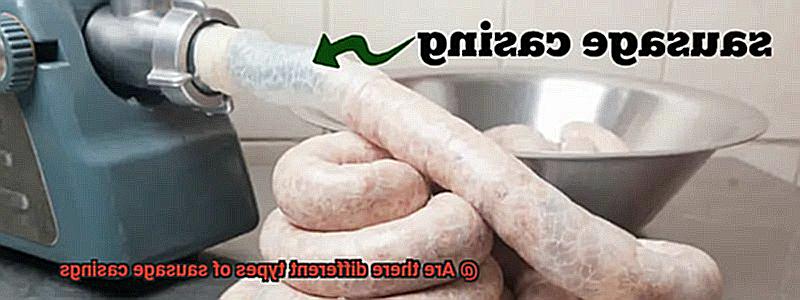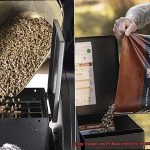Picture this: a juicy, sizzling sausage fresh off the grill, bursting with flavor and spices. But have you ever stopped to think about what’s holding all that deliciousness together? That’s right, sausage casings are essential for any sausage recipe, and there are a variety of types and materials to choose from.
Whether you’re a culinary expert or just a fan of sausages, understanding the different types of casings is crucial. Each casing has its unique characteristics – from texture to flavor to ease of use. And with options ranging from natural to synthetic casings, it’s important to know which one is best suited for your recipe.
In this article, we’ll dive into the world of sausage casings and explore whether there are different types available. We’ll cover everything from natural hog casings to collagen and synthetic casings – discussing the pros and cons of each option based on your preferences and recipe needs.
So sit back, grab a snack (maybe even a sausage or two), and let’s explore the fascinating world of sausage casings together.
Contents
What are Sausage Casings?
There are several types of sausage casings available today, each with its unique characteristics and benefits. Let’s explore them.
First up, natural casings. These are made from animal intestines and have been used for centuries. Natural casings provide a traditional taste and texture, allow for excellent smoke penetration when smoked, and offer a satisfying “snap” when bitten into. However, they can be delicate and require careful handling during preparation.
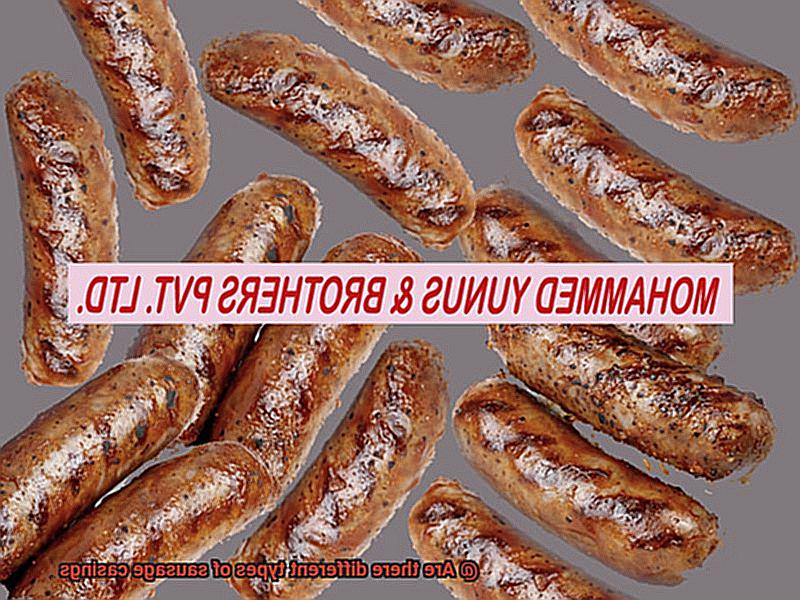
For those who prefer uniformity, collagen casings are an excellent choice. They are made from animal hides and bones, providing strength and ease of handling – perfect for mass production. Collagen casings can also be smoked or boiled depending on the desired outcome.
Fibrous casings made from cellulose fibers are a non-edible option that comes in various sizes and shapes, providing versatility for different types of sausages. They are durable and can withstand high cooking temperatures.
Lastly, plant-based casings are a fantastic cruelty-free alternative to traditional animal-based casings. Made from materials such as seaweed or soy protein isolate, they provide a unique flavor and texture to your sausages.
Types of Sausage Casings
Sausages are a beloved food all over the world, and the casing is a crucial component that can make or break the taste and texture of the sausage. There are several types of sausage casings available, each with its own unique characteristics and benefits.
Natural casings are the oldest and most traditional type of casing used for sausages. They are made from animal intestines, such as pigs, sheep, or beef. Natural casings provide a natural taste and texture to sausages and are ideal for smoking and grilling. They offer a satisfying snap when bitten into, which is why they are so popular among sausage enthusiasts. Natural casings are also versatile and can be used for a wide range of sausage types, including breakfast sausages, bratwursts, and Italian sausages.
Collagen casings are made from collagen fibers derived from animal hides and bones. They are uniform in size and shape, making them ideal for automated sausage production. Collagen casings have a long shelf life and are easy to use, making them a popular choice among home sausage makers. They also have a smooth texture that makes them perfect for making sausages that require a uniform appearance. Collagen casings are typically used for sausages that require a longer shelf life, such as snack sticks and summer sausages.
Fibrous casings are made from plant fibers and cellulose. They are non-edible but provide excellent moisture retention and smoking properties, making them suitable for smoked or cooked sausages. Fibrous casings come in various sizes and shapes, making them versatile for different types of sausages. They are perfect for sausages like salami or pepperoni that require smoking.
Artificial casings are made from synthetic materials such as plastic or nylon. They are uniform in size and shape, easy to use, and have a long shelf life. Artificial casings come in various colors and shapes, making them suitable for decorative sausages. They are often used for sausages that require a uniform shape and size, such as hot dogs or deli meats.
Natural Casings
As a connoisseur of sausage-making, I can attest that natural casings are the ultimate choice for crafting delectable sausages. Sourced from animal intestines, these casings deliver a distinctive texture and flavor that synthetic casings can never replicate.
The versatility of natural casings is another advantage. Depending on the animal they come from, you can create a wide range of sausages, from breakfast links to bratwursts. Hog casings are perfect for making thicker sausages like bratwursts, while sheep casings are ideal for smaller breakfast links.
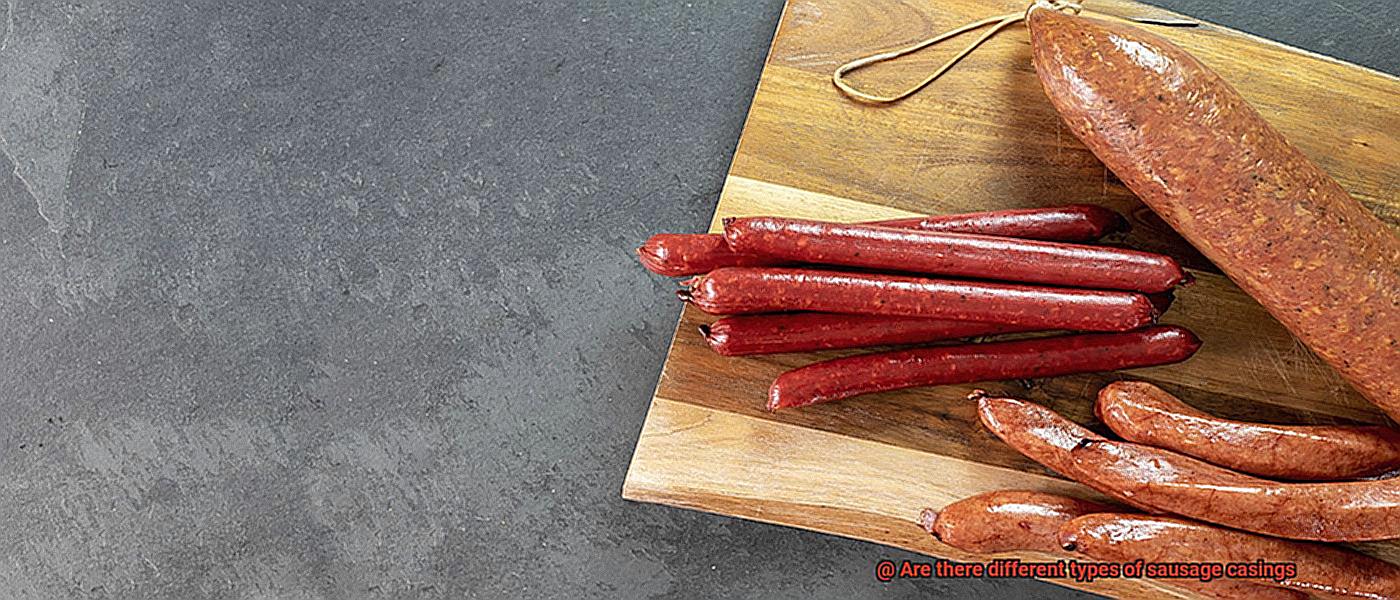
What makes natural casings stand out is their authentic taste and texture that gives a unique experience to sausage lovers. The slightly chewy texture of natural casings complements the meat filling inside and allows the sausage to breathe, which leads to a one-of-a-kind flavor profile. If you want to relish in a traditional sausage-making experience, look no further than natural casings.
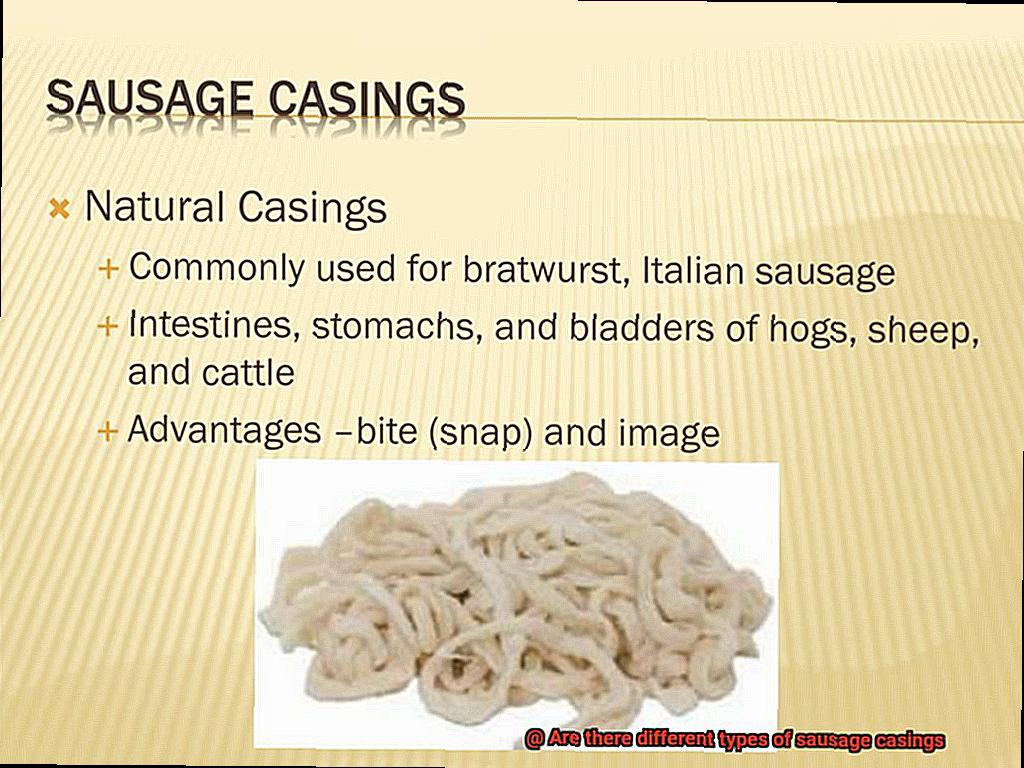
It is worth noting that natural casings require more preparation than synthetic options. Prior to use, they need to be soaked in water and stored properly to prevent spoilage. They also have a shorter shelf life than synthetic casings, so it’s best to use them up quickly or freeze them for later use.
Collagen Casings
These casings are a popular alternative to natural casings, made from extracted animal hides and bones processed into uniform, easy-to-use casings.
One of the main reasons for the popularity of collagen casings is their convenience. Unlike natural casings, they require no preparation or cleaning before use. Collagen casings also have a longer shelf life and can be stored at room temperature without spoiling. If you’re short on time or prefer an easier method of sausage-making, collagen casings may suit you.
However, there are some trade-offs when using collagen casings. They have a tougher texture than natural casings and lack the satisfying snap when bitten into. Collagen casings do not adhere as well to the sausage meat, which can result in air pockets forming between the casing and meat.
Collagen casings come in two varieties: edible and non-edible. Edible collagen casings are made from food-grade collagen and can be consumed along with the sausage. Non-edible collagen casings are used only for packaging and must be removed before eating the sausage.
Overall, collagen casings offer convenience and consistency over traditional sausage-making methods. However, if you prefer an authentic and natural texture and flavor in your sausages, natural casings may be a better choice.
Fibrous Casings
These casings are made from a cellulose material derived from wood pulp, combined with water and other additives to create a fibrous casing that is strong, durable, and easy to handle. But what makes fibrous casings so special? Let’s dive into their world and explore their advantages.
Firstly, there are different grades of fibrous casings available in the market. Standard grade casings are perfect for making smaller sausages like breakfast links or snack sticks. Medium-grade casings are ideal for making larger sausages like bratwurst or Italian sausage. And heavy-duty casings are suitable for making larger sausages like summer sausage or bologna. With such versatility, there is a fibrous casing that will work for any sausage-making needs.
Fibrous casings come in clear or colored varieties. Clear casings allow the meat to show through, which is particularly important when making products like pepperoni or salami, where the meat is expected to be visible. Colored casings can be used to differentiate different types of sausages or to give the product a more attractive appearance. So not only do they add functionality to your sausage-making, but they also enhance the visual appeal of your final product.
One of the most significant advantages of using fibrous casings is that they are very easy to remove after cooking. This is because the cellulose material used to make the casing breaks down during the cooking process, leaving the meat free from any casing residue. This makes for a seamless eating experience and saves you time and hassle when preparing your sausages.
Advantages and Disadvantages of Each Type of Casing
It can impact the flavor and texture of your sausage significantly. But with so many options available in the market, how do you choose the best casing for your sausages? Let’s take a closer look at the advantages and disadvantages of each type of casing.
First up, we have natural casings. These casings are made from animal intestines, providing a traditional look and feel to sausages. They allow smoke and moisture to penetrate into the sausage, adding flavor and texture. Natural casings are available in different sizes, making them versatile for various types of sausages. However, they can be more expensive than other types of casings and require special handling and preparation before use. They also have a shorter shelf life compared to synthetic casings.
Next, we have synthetic casings. These are made from materials like collagen, cellulose, or plastic. They provide a uniform appearance and are easier to use compared to natural casings. Synthetic casings have a longer shelf life and do not require special handling before use. However, they do not provide the same permeability as natural casings, which can affect the flavor and texture of sausages. Some people may also find the texture of synthetic casings less appealing than natural casings.
Lastly, we have vegetarian casings made from plant-based materials like seaweed or soy protein. They are suitable for people who follow a vegetarian or vegan diet. Vegetarian casings have a uniform appearance and are permeable, allowing smoke and moisture to penetrate into the sausage. However, they can be more expensive than other types of casings and may not be suitable for smoking.
To summarize, each type of sausage casing has its own set of advantages and disadvantages. Natural casings provide an authentic look and texture to sausages but require special handling and have a shorter shelf life. Synthetic casings are less expensive and easier to use but do not provide the same permeability as natural casings. Vegetarian casings are suitable for people who follow a vegetarian or vegan diet but can be more expensive and may not be suitable for smoking.
How to Choose the Right Type of Casing for Your Sausage-Making Needs?
When it comes to sausage-making, the casing is the unsung hero that holds everything together. But with so many options available, how do you choose the right one for your needs? Here are five sub-sections to consider when selecting the perfect casing for your sausage.
The type of sausage
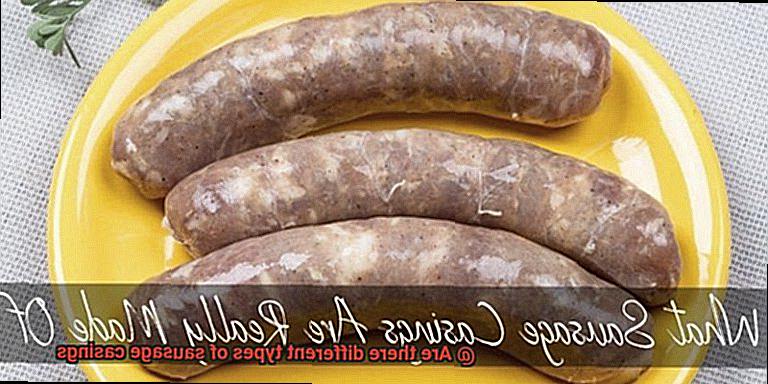
Different sausages require different casings. For example, if you’re making a fresh sausage that you plan to cook immediately, natural casings made from animal intestines are a popular choice. If you’re making a cured sausage like salami, fibrous casings that can withstand high cooking temperatures are a better option. And if you’re smoking your sausage, natural casings that allow for excellent smoke penetration are key.
Texture and flavor
The casing can impact the texture and flavor of your sausage. Natural casings provide a traditional “snap” when bitten into and have an authentic flavor that many sausage enthusiasts love. Collagen casings offer a consistent texture and are perfect for mass production. Synthetic casings come in various colors and flavors and can add a unique twist to your recipe.
Budget
Natural casings tend to be more expensive than collagen or synthetic casings. If you’re on a tight budget or making sausages in large quantities, collagen or synthetic casings may be a more cost-effective option.
Edible vs. inedible
Edible casings are made from materials that can be consumed along with the sausage, while inedible casings cannot be eaten and must be removed before consuming the sausage. Edible casings are convenient for those who want to avoid the hassle of removing the casing before eating, while inedible casings are necessary for certain types of sausages.
Experimentation
Don’t be afraid to try different types of casings to find the perfect fit for your sausage-making needs. Each type of casing has its own unique qualities, and experimentation can lead to delicious new creations. Try different sizes, materials, and shapes to find the perfect casing for your sausage.
jchTqF8n8a8″ >
Conclusion
In summary, sausage casings are a vital ingredient in any sausage recipe, and the options available are diverse and plentiful. You can choose from natural hog casings that provide a classic taste and texture to collagen casings that offer convenience and consistency. If you’re looking for durability and heat resistance, fibrous casings made from cellulose fibers are an excellent choice, while plant-based casings provide an ethical alternative to traditional animal-based options.
Selecting the perfect casing for your sausage-making project depends on several factors like personal preferences for texture and flavor, budget constraints, or whether you prefer edible or inedible casings. Experimentation is also key as each type of casing brings its unique advantages and disadvantages that can influence the final taste of your sausages.
Whether you’re a seasoned chef or a food enthusiast, it’s essential to know about the various types of casings available.

